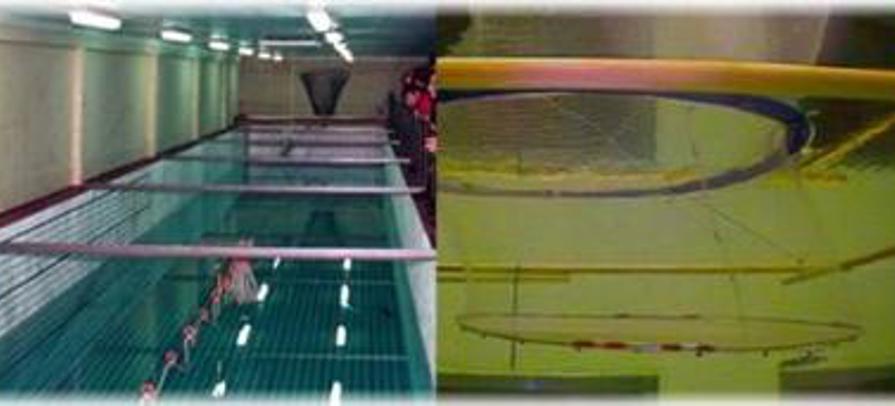Fish farming equipment for exposed sites - a commercial Ph.D. project
Last year the trawl making factory Vónin, the Faroese Fisheries Laboratory, and the Natural Science Faculty of the University of the Faroes collaborated on a project aiming to develop equipment for fishfarming in exposed sites, and to build up specialist knowledge about fish farming in exposed sites in the Faroes. The research is being continued as a Ph.D. project of Øystein Patursson in New Hampshire, USA in cooperation with the Natural Science Faculty and companies in the Faroes. The title of the Ph.D. project is "Fishfarming equipment for exposed sites". The supervisors are Knud Simonsen from the Natural Science Faculty and Professor David Fredrikson from the University of New Hampshire. The Ph.D. project began in August 2003, and will be finished in 2007.Interest in fishfarming in exposed sites began when the growth in the export of farmed fish stopped in 2002. At that time all the areas in sheltered waters in the Faroes were utilised. It is also a fact that pollution can be a problem in still waters. Information, which Fiskaaling collected, shows fish that have been bred in exposed sites generally fare better and are better sales products.
The farm cage that is predominantly used by the industry today has a net hanging from a float.Often there are weighted lines or weights attached to the net to hold it down, otherwise there is nothing to hold it taut. If there is a current in the sea, the space decreases in the net and pockets can also appear in it. This does not allow optimum development of the fish. If the fish comes into contact with the net, its scales may be damaged, which could result in its death soon after.
The intention is to develop a fishfarm cage which holds the net taut. This will also result in a larger number of fish being kept in the cage. Two ideas have been put forward: one is to have a weighted ring at the bottom under the net, and the other is to make a current guard in front of the fishfarm cage to lessen the current against the cage. Several fishfarmers have experimented with weighted rings, and experiments have also been made abroad, but an efficient solution does not appear to have been found yet. Practical experiments with current guards have not been carried out yet. In the project that Vónin, the Faroese Fisheries Laboratory and the Natural Science faculty carried out, test models were made in Vónin’s tank. Calculations have been made to assess the farming space with various current speeds and with various weights in the bottom of the fishfarm nets, in addition tests with a 1:20 scale model of a 128 m (circumference) fishfarm ring were made in Vónin’s tank. Some preliminary results are shown in the table below.
Current Weight | 0.25 m/s 0.5 knots |
